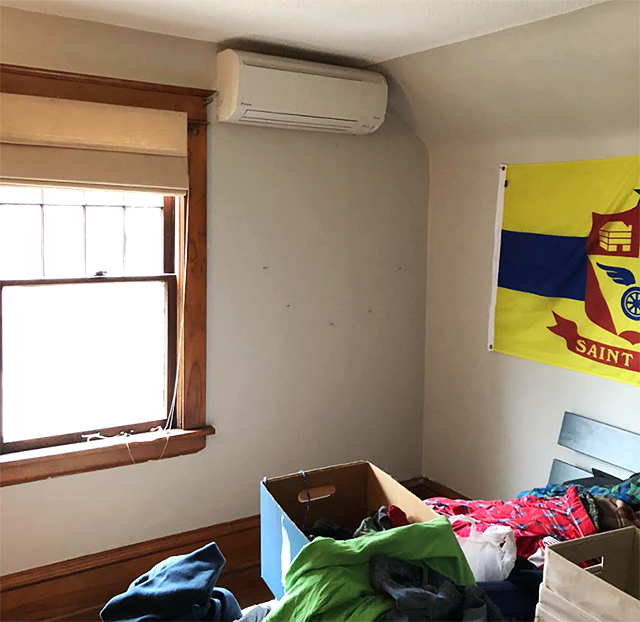In Europe, the horrific Russian invasion of Ukraine has triggered not only a huge refugee crisis, but a push for climate action. While hopes for peace rely on the harsh sanctions placed on Russia, these financial measures are undermined every day by the natural gas which, even now, flows through Ukrainian pipelines from Russia to the rest of Europe. It’s no exaggeration to suggest that the reliance on Russian gas is helping them stay in the war.
This is why many European governments recently made commitments to decarbonizing their energy sectors, setting goals that would have been almost unthinkable only a few months ago: France announced this week it will cease importing Russian oil and gas in five years, while Germany accelerated its goal for 100% renewable electricity to 2035. For many European nations, these leaps depend on one key component: heat pumps, which are just beginning to be a core piece of energy infrastructure.
To me, the European energy urgency raises the question: could those measures work here too? The global energy market is inter-connected, and given the reliance of the Upper Midwest on natural gas, heat pumps could be key to taking climate action in Minnesota.

Heating and cooling machines
Put simply, heat pumps are efficient, electric heating and cooling machines that transfer temperature (aka thermal energy) from one source to another. They come in all sorts of sizes and types, typically using air or water that can be above or below ground, and they can work at large or small scales. They’re not that common in Minnesota because for many years the technology worked better in warmer climates, but that has begun to change.

As Cherne-Hendrick describes, the “cold climate cutoff” has steadily declined in recent years, so that new pumps can often work in below-zero temperatures.
That said, heat pumps are not magic bullets. They only make sense with home or offices that are well insulated and energy efficient in the first place, with updated windows and doors that allow smaller-scale technology to work. For most Minnesota homeowners, that’s the most important step. (Here’s a good starting point for doing a home energy audit for your own home.)
“For existing building stock, especially older buildings, they are not as energy efficient as they should be,” explained Cherne-Hendrick. “We have a conservation action improvement program and state goals in statute to improve energy efficiency. Without buildings that are as energy efficient as possible, it’s really hard to get through those handful of polar vortex days with an air source heat pump alone.”
But heat pumps can work well in newly constructed or updated buildings. In those cases, they can be a key piece of the puzzle, allowing Minnesotans to move toward all-electric buildings and severing fossil fuels from our built environment.
“There’s no reason we can’t build new construction to the point where the building energy performance standard is high enough to accommodate air source heat pumps,” said Cherne-Hendrick. “What’s limiting there is that our building codes are not as robust as they should be. We need to be operating at a scale and speed that outpaces what can be done by individual home and building owners.”
A heat pump in action
But just because it’s difficult, doesn’t mean individuals cannot adopt heat pump technology. In fact, they’re becoming more common.
“Ours has run every single day this winter, and never not worked,” said Matt Privratsky, who owns a home in St. Paul’s Hamline-Midway neighborhood. “There are studies that say they work best to 20 below, but colder than that’s been fine, and we run it the whole time.”
While shopping for a home a few years ago, Privratsky and his partner bought one where the boiler and water heater were on their last legs, intending to invest in a heat pump system and other upgrades. Shortly afterward, they replaced their windows and insulated their home, allowing them to shift onto an all-electric carbon footprint.

After the Privratskys significant investment, something in the ballpark of $15,000 to $20,000, the result is an efficient all-electric home free from using natural gas. Their heat pump system has four different “heads” that can be turned on and off depending on which parts of the house are being used. As a bonus, the heat pumps are a more efficient way to cool the home on hot summer days.
“The best way to think of it: it’s doing both air conditioning and a furnace at once,” Privratsky explained. “Math wise, it’s way more than just furnace or air conditioning. And it’s a lot more efficient than those other appliances.”
Energy independence
Readers of a certain age will remember the catch-all term “energy independence”, referring to the desire to stop using foreign oil in American daily life. It doesn’t take much imagination to connect the dots between various American wars and global oil and natural gas supplies, but the link is rarely as clear as the Russian invasion of Ukraine.
Even though the United States has ramped up national production of oil and gas, thanks in part to widespread fracking, the impulse to decarbonize in the United States should be just as urgent as in Europe. Rather than calling for gas tax holidays, increased offshore drilling or repairing ties with Venezuela, American policymakers would do better to roll out aggressive decarbonization funding.
A move toward embracing heat pumps in new construction, updating building codes, investing in insulation and adopting other low-carbon technology should not just be a European effort. There is legislation introduced in the Minnesota House that would introduce a tax credit to offset the costs of heat pumps, lowering the financial barrier for everyone. Similarly, a recent pilot project in New York State might offer a good model for in Minnesota, proving that the United States can also handicap fossil fuel dictatorships by moving off of oil and gas.


0 Commentaires